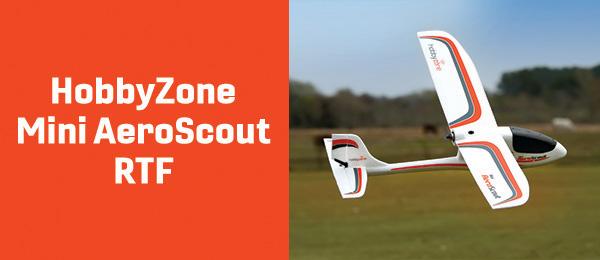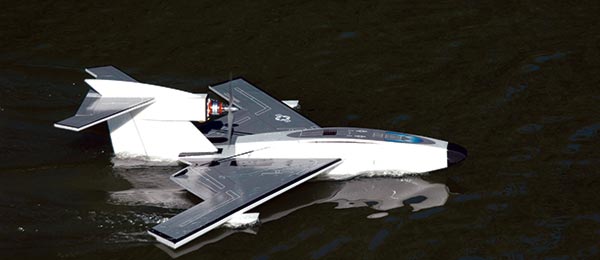
Written by Ashley Rauen Micro soaring in the open skies Product review As seen in the Winter 2017 issue of Park Pilot.
Specifications:
Type: RTF micro sailplane Skill level: Beginner Wingspan: 24.8 inches Length: 19.1 inches Weight: 1.9 ounces Price: $89.99 Info: www.flyzoneplanes.comFeatures:
>> Flyzone four-channel transmitter with built-in battery charger >> Preassembled wing, fuselage, and tail assemblies >> 3.7-volt 1S 200 mAh LiPo battery >> Four AA transmitter batteries >> Folding propeller >> Instruction manualProduct review
The Flyzone Micro Calypso is a cute little sailplane that’s perfect for any beginner interested in soaring. Sailplanes have always been my favorite type of airplane to watch, and I was excited to receive this little guy and try it for myself. Although this is identified as an RTF (ready-to-fly) model, there are still a few steps needed to get it ready for the air. First, as always, charge the flight battery. This can be done anywhere because the accompanying transmitter has a built-in charging port. So you can charge at the field, too!
The 1S 200 mAh LiPo battery charges by plugging into a port on the back of the transmitter, which is perfect for charging at the field!
The Calypso’s tail and wing need to be assembled before flight. The horizontal stabilizer is placed over the end of the fuselage and is guided into place by an assembly key. The vertical stabilizer is positioned on top and locks into the assembly key, ensuring that both pieces are secure. Two tape strips are included that wrap around the front of the horizontal stabilizer and over the plastic elevator supports to keeps its alignment in place. The pushrods are connected next, which is easy as long as you follow the directions. There are two slots in the control horns, as well as one hole in its center. The pushrods actually click into either slot, depending on if you want it to be more or less responsive. Do not put the rod into the center hole. It doesn’t belong there; it severely throws off your stabilizer alignment, and it’s a pain to get it back out. This is why we read directions. Finally, the wing is installed. The wing tab slides into the front of the fuselage and the back locks in place with a magnet. I admit that I was unsure whether this was enough to hold the wing in place during flight, but the magnet is surprisingly powerful for its small size. It stays secure, but you can also easily remove the wing if you need the model to be even tinier for traveling to and from the field.

The Calypso’s propeller folds back when the throttle is turned off to allow for optimal soaring.
Assembly time is short and the battery takes a full hour to charge, so it’s possible you’ll have your Calypso ready to go before its battery. It’s a good thing because there is still a lot to check out in the instruction manual while you wait. Information about choosing the best weather to fly in is crucial. Because this model weighs less than 2 ounces and is mostly wing, it’s best to fly it on a day with no more than 1 to 5 mph wind. A preflight check, takeoff, flight, and landing techniques, as well as a troubleshooting guide, make this short manual in-depth and helpful. Launch the Calypso into the wind at three-quarters throttle. All that’s needed is a gentle and level push into the air to get this micro glider flying. Using the rudder to keep the wing straight, ascend to at least 50 feet and begin turning simple slow circles through the sky. The Calypso wants to be in the air and use its wide wingspan to hang on the wind and coast the skies with no throttle input. It is a true soaring airplane and stays perfectly content tracing lazy paths through the air. Push up on the right stick and the Calypso will make speedy dives out of its glide. Turning the throttle back on and pulling back on the right stick will give this model the energy to make loops through its flight path. And that magnet does still hold the wing in place!

This mini glider is quite agile and powerful in open skies.
Inputs on the controls are sensitive, so it’s best to make subtle movements until you get a feel for the response. When comfortable, the RTF transmitter is programmed with dual rates and you can flip the switch to high rates and get more throw in your rudder and elevator. I spent my flights in the low rate because it’s easier for beginner or inexperienced pilots to control. I love the Micro Calypso. It’s cute, fun to fly, and a good introduction to the world of sailplanes. If anyone is interested in learning how to chase thermals, the Micro Calypso is a great place to start. -Ashley Rauen [email protected]
Article:






